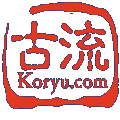The “Unities of Journalism”: Who? What? Where? When? Why? How? They’re probably as good a place to start as any. This series will cover selected Japanese and Ryukyuan martial arts and ways and their respective traditions or “schools” or “styles” (as opposed to customs), specifically those created before the Haitorei (Sword Abolishment Act) of 1876. This was when the Meiji government passed a law that prohibited the people of Japan, even former members of the warrior class (the bushi, or samurai), from bearing arms in public unless they were authorized members of the armed forces or police and on official duty. We’ll also describe some of these traditions more noteworthy exponents and discuss issues relating to their technical curricula and training methods. As and when necessary, though, we’ll also take a look at a number of martial disciplines and aspects of martial culture from China, Korea, Southeast Asia, and India.
That covers the who, what, where, and when. Several reasons “why” come to mind. First, my wife is the editor of Aiki News. In discussing the possibility of my making a regular contribution, she ended with a most cogent argument, “…or else.” Hey, I can take a hint. The operative phrase is, “Yes, dear.” Another important reason is that there’s a lot of information concerning the technical basis and historical roots of aiki now coming to light and it seems both necessary and desirable to give readers of Aiki News a better understanding of the classical martial arts and ways to aid their comprehension of this previously unpublished material–to put it all into a technical and historical context. Since I’m on the ground as it were, I’ve direct access to many of the headmasters, teachers, and senior exponents of these disciplines. As the classical martial arts are the major focus of my own training and study, it’s an excellent opportunity to share what I’ve learned in the years I’ve lived and practiced here in Japan.
Which brings us to “how”. Or is it who and what? My primary influence, indeed my mentor in the study of martial arts and culture, is the late Donn F. Draeger. His book, Asian Fighting Arts, co-authored with Robert w. Smith, sparked my imagination when it first appeared about twenty-five years ago. Several years after that, while “dojo-hopping” through Malaysia on my way to Japan, I met Mr. Draeger by chance at a Yoshinkan dojo in Seremban. The conversation we had, only about an hour or so, began a change in my perspective. The introductions that Mr. Draeger provided me in Hong Kong, Malaysia, Indonesia, and throughout Japan gradually drew me firmly into the web. After spending several years training in the Kansai area (mainly in Ueshiba-style aiki), I moved to Tokyo where I could train in several koryu (classical martial traditions) and continue my study of martial culture with Mr. Draeger and other accomplished scholars and exponents. This field of enquiry is properly termed hoplology, which may be defined as the study of combative behavior and martial culture. Hoplology forms the basis for my own work and will inform much of what is covered here.
Okay, that takes care of the basics–now a few definitions. I will use the term bujutsu to mean the martial arts, systems that are intended to provide effective means of combat and/or self-protection. Budo will refer to the martial ways, systems that use the métier of “combat” as a means of self-cultivation through austere training (shugyo). Ko refers to classical systems and traditions which, as mentioned above, existed before the prohibition on wearing swords changed the nature of Japanese society from a martial society (albeit only nominally so during the latter part of the Tokugawa military government) to a civil one. This change was of major significance, and needs to be more closely examined by students of modern arts such as aikido, kendo, or judo. The modern disciplines and systems, gendai budo, then, are those which were created after the establishment of a civil society and government in Japan in the 1870s and 1880s.
The classical martial arts centered on the ryu or ryuha, a Japanese institution often glossed as “school” or “style” but which might better be thought of as a tradition, a reified or incorporated body of techniques, customs, behaviors, beliefs and teachings embodied in a group of people engaged in martial training. Most of my columns will consist of a brief description of different koryu, including their salient technical characteristics, short histories of the particular traditions and people connected with them, and discussion of some of their principles and teachings. I will also write about some of the related issues that are not much understood in the West, such things as the iemoto seido (headmaster system), classical training methods, concepts of martial preparedness/awareness as they relate to modern standards and the like.
My sources are the headmasters, teachers, and senior exponents of the Japanese and Ryukyuan koryu, along with some of the most noted scholars (not necessarily students or practitioners themselves) in the field of martial culture. My opinions and observations, of course, are my own and may cause some disagreement among those who read them. I certainly welcome your responses or any questions you may have.
Copyright ©1993 Meik Skoss. All rights reserved.
This article first appeared in Aiki News #97, Fall/Winter 1993.
